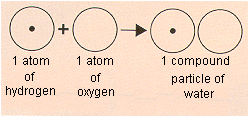
Historical Background on the scientist
John Dalton was born on September 6, 1766,in Eaglesfield, Cumberland. John Dalton was a chemist meteorologst, and a physicst. Dalton is best recognized for his modern developement of the atomic theory and Daltonism ( color blindness ).In 1793, he moved to Manchester, and through John Gough, a blind philosopher whose instruction he owed much of his scientific knowledge, Dalton was names teacher of mathematics and natural philosophy at the New College in Manchester. Dalton told Thomson aout his atomic theory, in which he made an outline. Dalton lived a moest nd unassuming life, with very few friends, and with the sae routine everyday. Dalton died from 3 strokes at 3 different times which caused him to die on July 27, 1844
Experimental design/Data collection
Experiments with gases that first became possible at the time of the nineteenth century led John Dalton in 1803 to think of a modern theory of the atom.Dalton's law of partial pressures states that the total pressure of a mixture of gases is the sum of the partial pressures of the various components.
PT = P1 + P2 + P3 + ..
Dalton thought that water contains one atom of hydrogen and one atom of oxygen and figured out that the relative weight of the oxygen atom must be 5.6 times as large as the hydrogen atom.




Conclusion and contribution to the atomic theory
- He stated that the reason an element is pure is because all atoms of an element were identical and that in particular they had the same mass.
- He also stated that the reason elements differed from one another was that atoms of each element were different from one another; in particular, they had different masses.
- John Dalton used evidence from his experiments and research with gases to show that there are many types of atoms
Citation
Jessa , T. (2009, August 24). John dalton's atomic theory. Retrieved from http://www.universetoday.com/38169/john-daltons-atomic-model/
value. quality care. convenience.